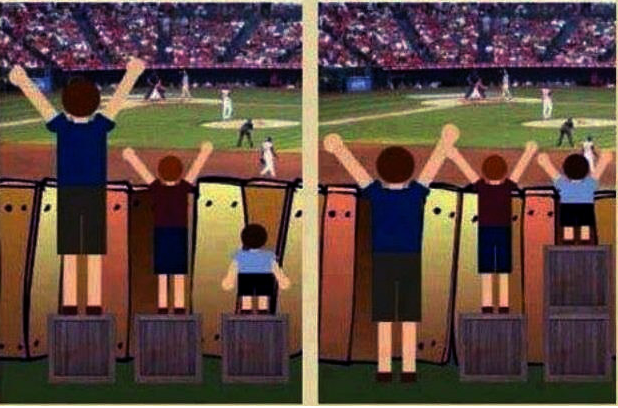Like this article? Chip in to keep stories like these coming.
Today’s post is part one of three. In the next two parts I discuss why low income families eat less healthy food, the silly things that many people (usually with money) say we should do about it, and why it is a problem to make food literacy the explanation for food insecurity.
In 2013, over 47 million Americans depended on food stamps to buy their groceries. Those food stamps turn out to be worth about $5 or $6 per day, per person.
Not a lot to live on — but better than nothing?
Canada does not have a food stamp program. Canada does not have a national school breakfast or lunch (or supper or brunch or snack) program. We are one of the few “First World” countries without a formal, national nutrition assistance program. Non-governmental strategic policy papers exist, but as such papers typically do, they promote particular interests and agendas.
Why not food stamps?
The view from Canada is that we don’t need specific nutritional programs because our social assistance programs are good enough. Instead of funding food stamps, or school lunches, we give families money — in my province, through Ontario Works (OW) or the Ontario Disability Support Program (ODSP) — and let them make their own food and other choices. This could be a more dignified, less paternalistic way to support individual’s real freedom and opportunities to choose how they want to live.
If our social assistance programs were empowering, i.e. established some equality of opportunity, we wouldn’t see poor health outcomes clustering around particular demographics. It’s true that we start with different abilities and inclinations, and so even in a system of equal opportunities we would not see equal outcomes. But when certain groups consistently and predictably fall below average on basic measures like health, or food security, or educational attainment, we can and should conclude that those groups face additional obstacles, or less-than-equal opportunities.
Low incomes and food insecurity
In other words, your being born into a low-income (or indigenous or single-parent) family should have no bearing on whether or not you are food secure, or healthy, or likely to go to jail. However, in Canada it does, and signals are that it will get worse before it gets better.
Our social assistance rates are not pegged to inflation, meaning that every year they fall further behind basic living expenses. In 1993, the last year that social assistance rates increased with the inflation rate, a single person could get up to $663 a month through social assistance. Shortly afterwards, that rate was cut down to $520 and it was almost a decade before it received any sort of increase. Had the $663 rate kept pace with inflation, it would now be about $932 a month. The current maximum monthly allowance for a single person on Ontario Works is $626, though the 2014 Ontario budget promises a $30 increase.
Unsurprisingly, then, a recent national food security study concludes that
two-thirds of households whose major source of income was social assistance were food insecure,* as were 37 per cent of those reliant on Employment Insurance or Workers’ Compensation. Other household characteristics associated with a higher likelihood of food insecurity included being a female lone parent (35 per cent were food insecure), having an income below the Low Income Measure (33 per cent), being Aboriginal (27 per cent), and renting rather than owning one’s home (25 per cent).
None of this is particularly surprising, I expect. We already knew, for example, that “a large body of epidemiologic data show that diet quality follows a socioeconomic gradient,” and that “whereas higher-quality diets are associated with greater affluence, energy-dense diets that are nutrient-poor are preferentially consumed by persons of lower socioeconomic status (SES) and of more limited economic means.” The same study concludes that, given these strong correlations, “some current strategies for health promotion, based on recommending high-cost foods to low-income people, may prove to be wholly ineffective.” In other words, telling low income people to solve their problems by getting more money is (best-case-scenario) not going to work.
In part two, I look at why low income families eat less healthy food, and the silly things that many people (usually with money) say we should do about it.
*Borrowing from the Food and Agricultural Organization of the United Nations (FAO), the report used the following definition: “[The] experience of food insecurity can range from concerns about running out of food before there is more money to buy more, to the inability to afford a balanced diet, to going hungry, missing meals, and in extreme cases, not eating for a whole day because of a lack of food and money for food.”



